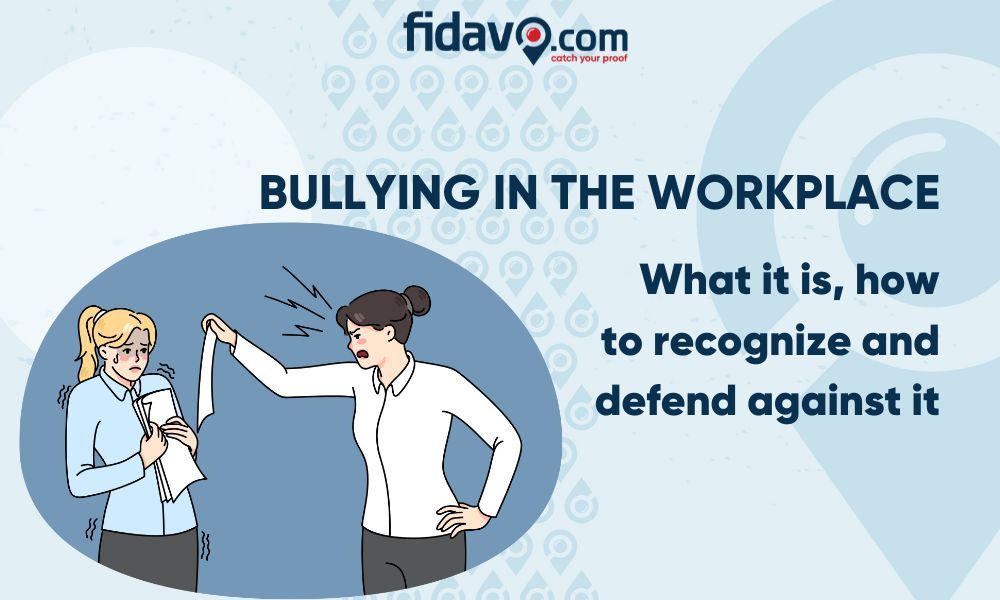Bullying in the workplace: What it is, how to recognize and defend against it

What is Workplace Bullying (Mobbing)?
Workplace bullying, or mobbing, is a set of persecutory behaviors that occur in the workplace, with the initial intent to harm and subsequently to marginalize the unfortunate victim.
Although there is no law that clearly regulates this issue, there are tools provided by the legal system for workers involved in this unpleasant situation to defend their position.
When Does Workplace Bullying Become a Crime?
According to jurisprudence, the crime of workplace bullying occurs when there are persistent and harassing behaviors over time, causing harm to the victim with vexatious intent. These actions can be injurious to the dignity, personality, and health of employees. There is always a causal link between these behaviors and the prejudice the victim regularly experiences, undermining their psychophysical integrity.
Various behaviors related to workplace bullying include:
- The worker may find themselves completely isolated in the work environment;
- The employer sends them to inconvenient locations;
- Assigns them positions less qualified than their background;
- Imposes an intolerable workload;
- Excludes them from projects;
- Does not allow them to participate in company meetings;
- Withholds bonuses and benefits;
- Rejects their leave requests;
- Prevents them from attending training courses beneficial for career advancement;
- Intensifies monitoring during their duties;
- Excludes them from the company's communication network.
There is a risk that these activities, over time, can place the victim at the center of a real defamation campaign. The worker may become the target of gossip, hostile behaviors, insults, or jokes. In extreme cases, unjustified dismissal may occur.
In conclusion, behaviors related to the concept of mobbing are numerous. There are many illicit actions involved. The common denominator of these behaviors is their harassing nature: the perpetrator, who can be an employer or a superior, systematically carries out unpleasant and aggressive actions over time to force the victim to leave the workplace.
Examples of Workplace Bullying
Regarding the individuals involved and their hierarchical roles within a company or office, here are examples of workplace bullying: the most common is vertical bullying, where individuals hold higher hierarchical positions than the targeted worker, often referred to as bossing.
Then there is horizontal bullying that occurs among colleagues at the same level. Specific examples of this improper behavior also involve mistreatment of family members and partners, especially in small environments like professional offices or family businesses, where there are habitual and intense relationships, as well as maximum trust placed by the victim.
A prevalent case involves private violence: intimidating behavior forces the victim to suddenly accept degrading tasks or inappropriate changes in their work routine.
The bully may even threaten the victim, presenting negative consequences if they refuse to accept a new scenario.
There are also cases of sexual harassment that fall under the category of bullying: kisses, hugs, groping, and invasive acts in the victim's non-consensual sexual sphere are particularly relevant examples.
There are also cases of personal injuries, both accidental and intentional, that can harm the psychophysical integrity of the employee.
How to Defend Against Workplace Bullying
To defend against workplace bullying, the most appropriate solution is to initiate legal action against the perpetrators.
The goal should be to seek compensation for the damages suffered due to these repeated and harassing behaviors, including both moral and financial damages.
If deemed necessary, the victim can request the application of sanctions against the responsible parties as provided by the law.
How to Prove It?
Proving that one is a victim of workplace bullying is feasible only if the existence of discriminatory acts is systematically demonstrated, along with the occurrence of damages resulting from violent behaviors.
These actions should not fall within the scope of the employer's traditional powers of monitoring professional activities nor be limited to possible sporadic cases of conflict in the work environment. Instead, they must put the targeted employee in a state of distress.
Conclusions
Overall, the issue of workplace bullying is unfortunately becoming more frequent. Given the severity of the phenomenon, there is a need for increased legal protection for workers.
It is essential, in fact, to report improper behaviors to the employer as soon as possible. If the employer is the negative protagonist, it is advisable to contact a legal professional to defend one's position. Only timely action can safeguard dignity and psychophysical health in the face of violent and repeated behaviors.
Defend yourself and gather evidence by seeking the involvement of a private investigation agency. Investigators will be able to collect all the necessary evidence to protect your position and claim the compensation you deserve.
```
 EN
EN  IT
IT 